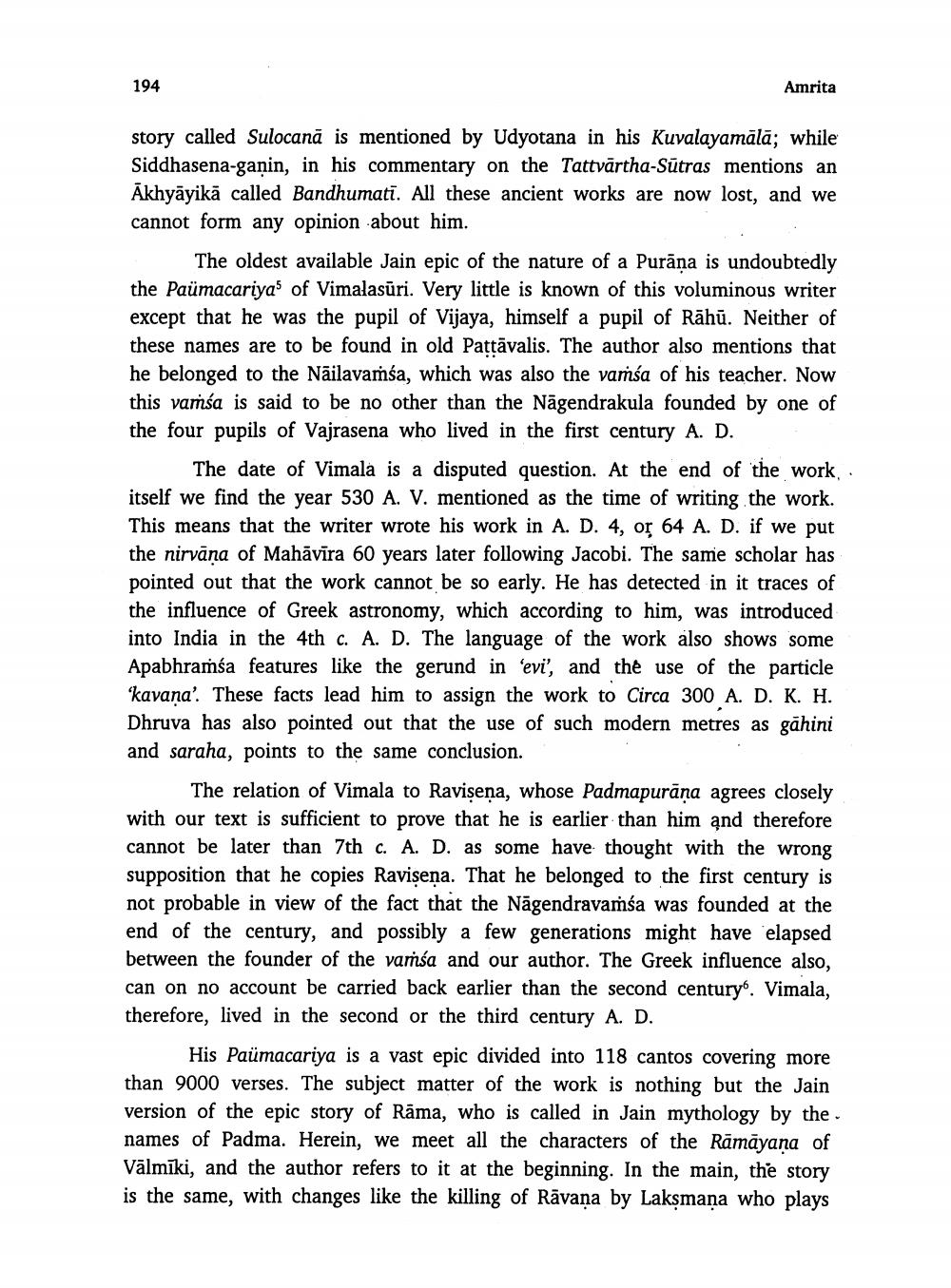________________
194
Amrita
story called Sulocană is mentioned by Udyotana in his Kuvalayamālā; while Siddhasena-ganin, in his commentary on the Tattvārtha-Sūtras mentions an Ākhyāyikā called Bandhumati. All these ancient works are now lost, and we cannot form any opinion about him.
The oldest available Jain epic of the nature of a Purāna is undoubtedly the Paümacariya of Vimalasūri. Very little is known of this voluminous writer except that he was the pupil of Vijaya, himself a pupil of Rāhū. Neither of these names are to be found in old Pattāvalis. The author also mentions that he belonged to the Nāilavamsa, which was also the vassa of his teacher. Now this vamśa is said to be no other than the Nāgendrakula founded by one of the four pupils of Vajrasena who lived in the first century A. D.
The date of Vimala is a disputed question. At the end of the work, itself we find the year 530 A. V. mentioned as the time of writing the work. This means that the writer wrote his work in A. D. 4, or 64 A. D. if we put the nirvana of Mahāvīra 60 years later following Jacobi. The same scholar has pointed out that the work cannot be so early. He has detected in it traces of the influence of Greek astronomy, which according to him, was introduced into India in the 4th c. A. D. The language of the work also shows some Apabhramśa features like the gerund in evi', and the use of the particle ‘kavana'. These facts lead him to assign the work to Circa 300 A. D. K. H. Dhruva has also pointed out that the use of such modern metres as gāhini and saraha, points to the same conclusion.
The relation of Vimala to Ravisena, whose Padmapurana agrees closely with our text is sufficient to prove that he is earlier than him and therefore cannot be later than 7th c. A. D. as some have thought with the wrong supposition that he copies Ravişeņa. That he belonged to the first century is not probable in view of the fact that the Nāgendravamsa was founded at the end of the century, and possibly a few generations might have elapsed between the founder of the vamsa and our author. The Greek influence also, can on no account be carried back earlier than the second century. Vimala, therefore, lived in the second or the third century A. D.
His Paümacariya is a vast epic divided into 118 cantos covering more than 9000 verses. The subject matter of the work is nothing but the Jain version of the epic story of Rāma, who is called in Jain mythology by the names of Padma. Herein, we meet all the characters of the Rāmāyana of Vālmīki, and the author refers to it at the beginning. In the main, the story is the same, with changes like the killing of Rāvana by Laksmana who plays
:




